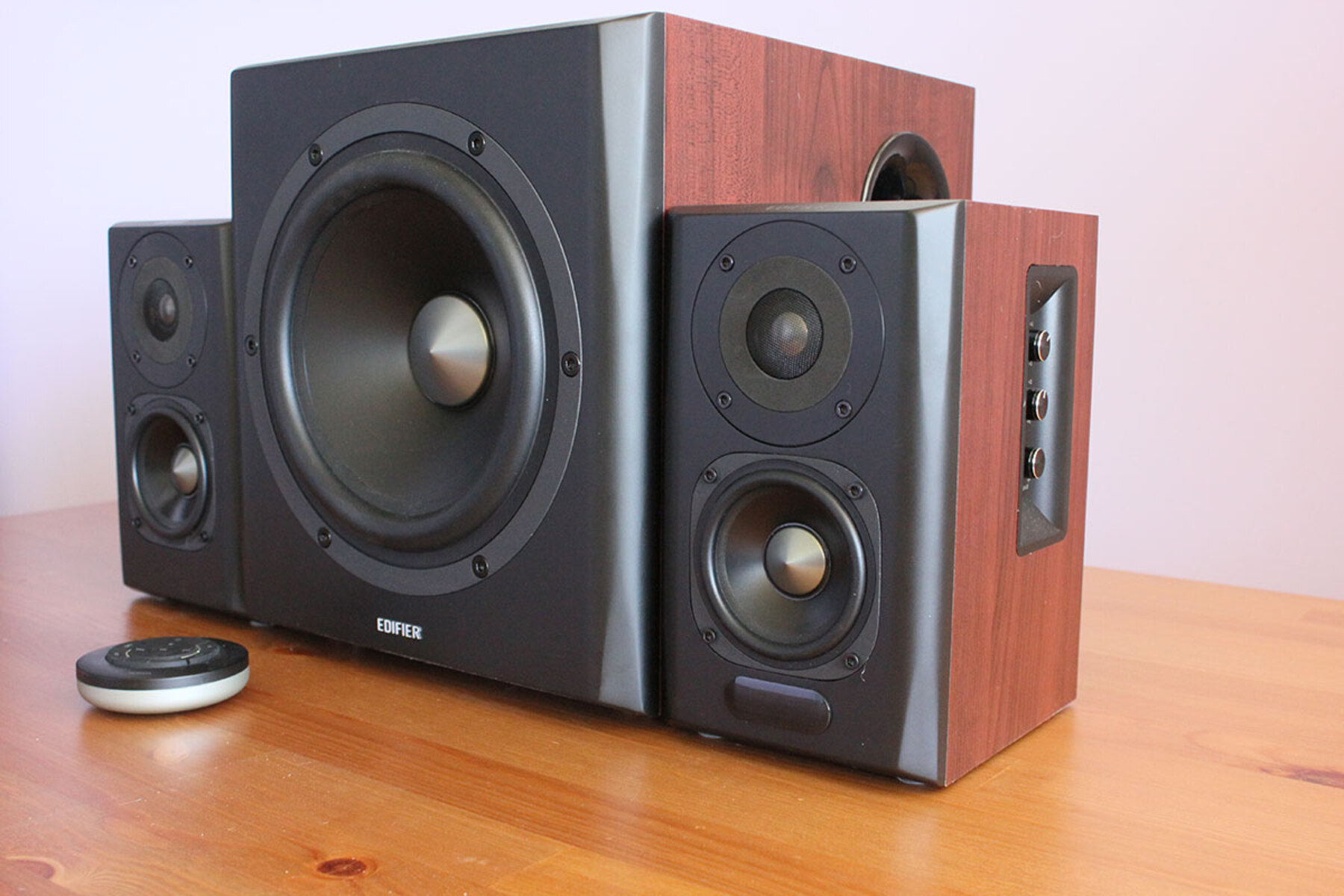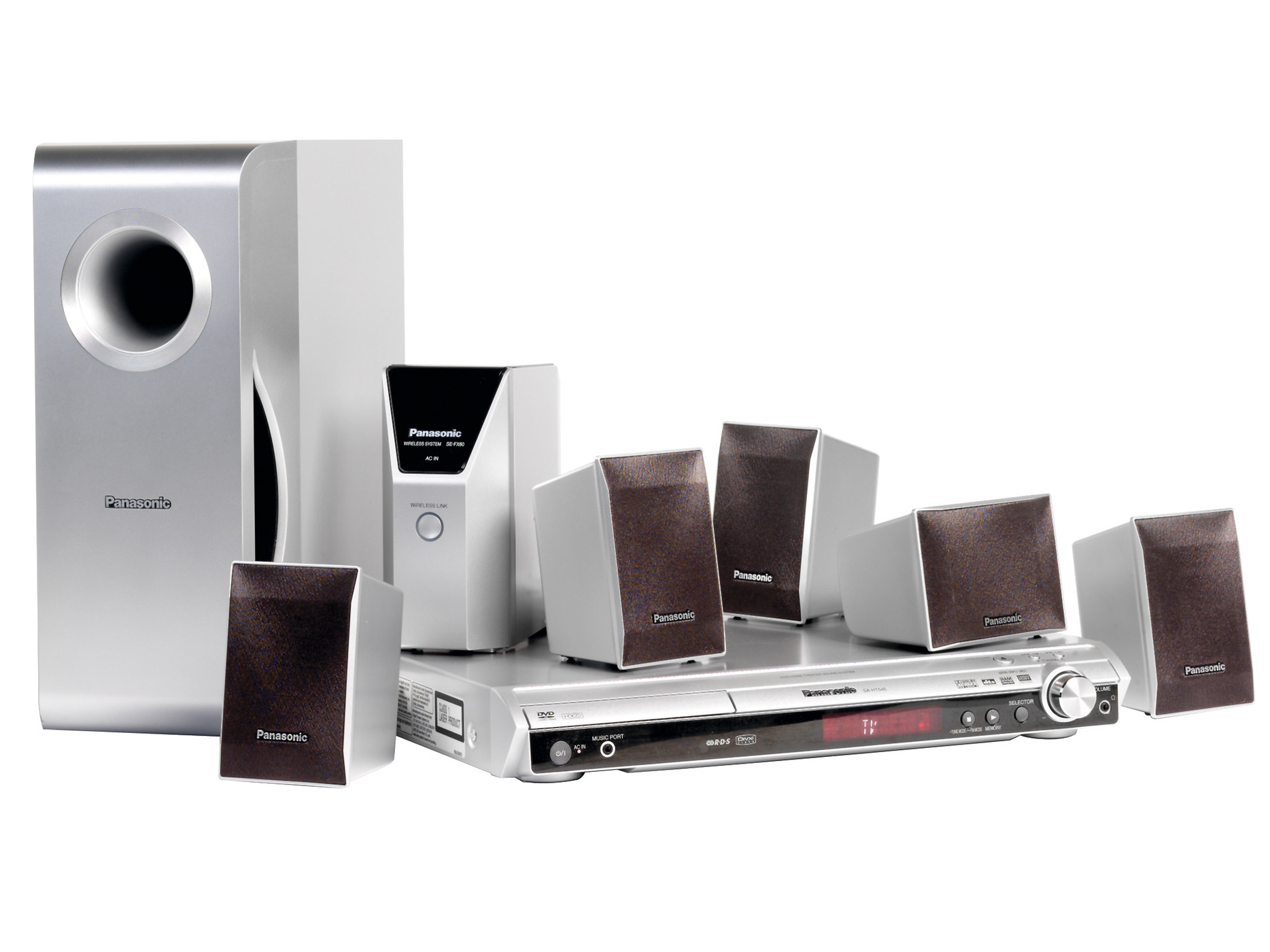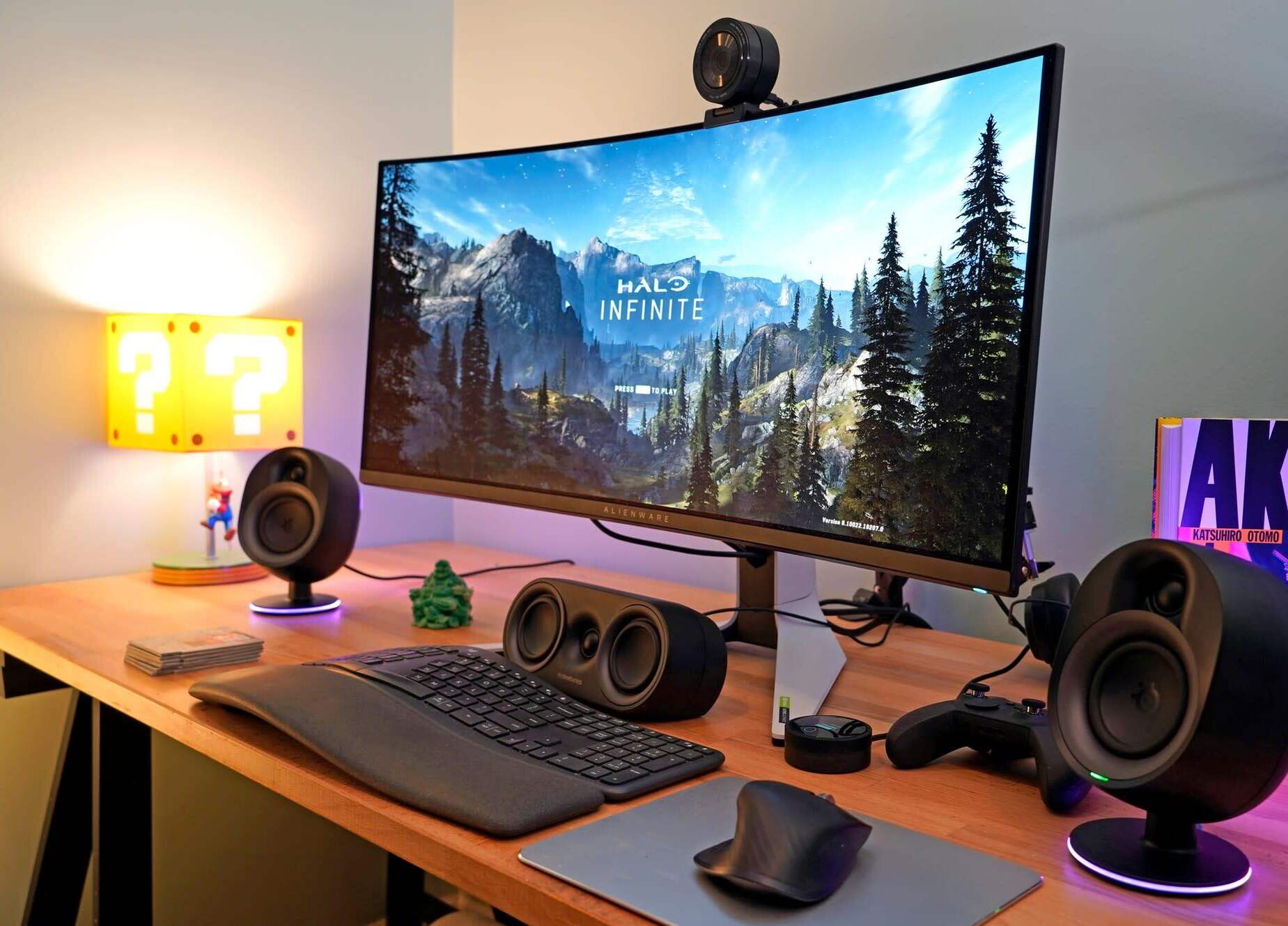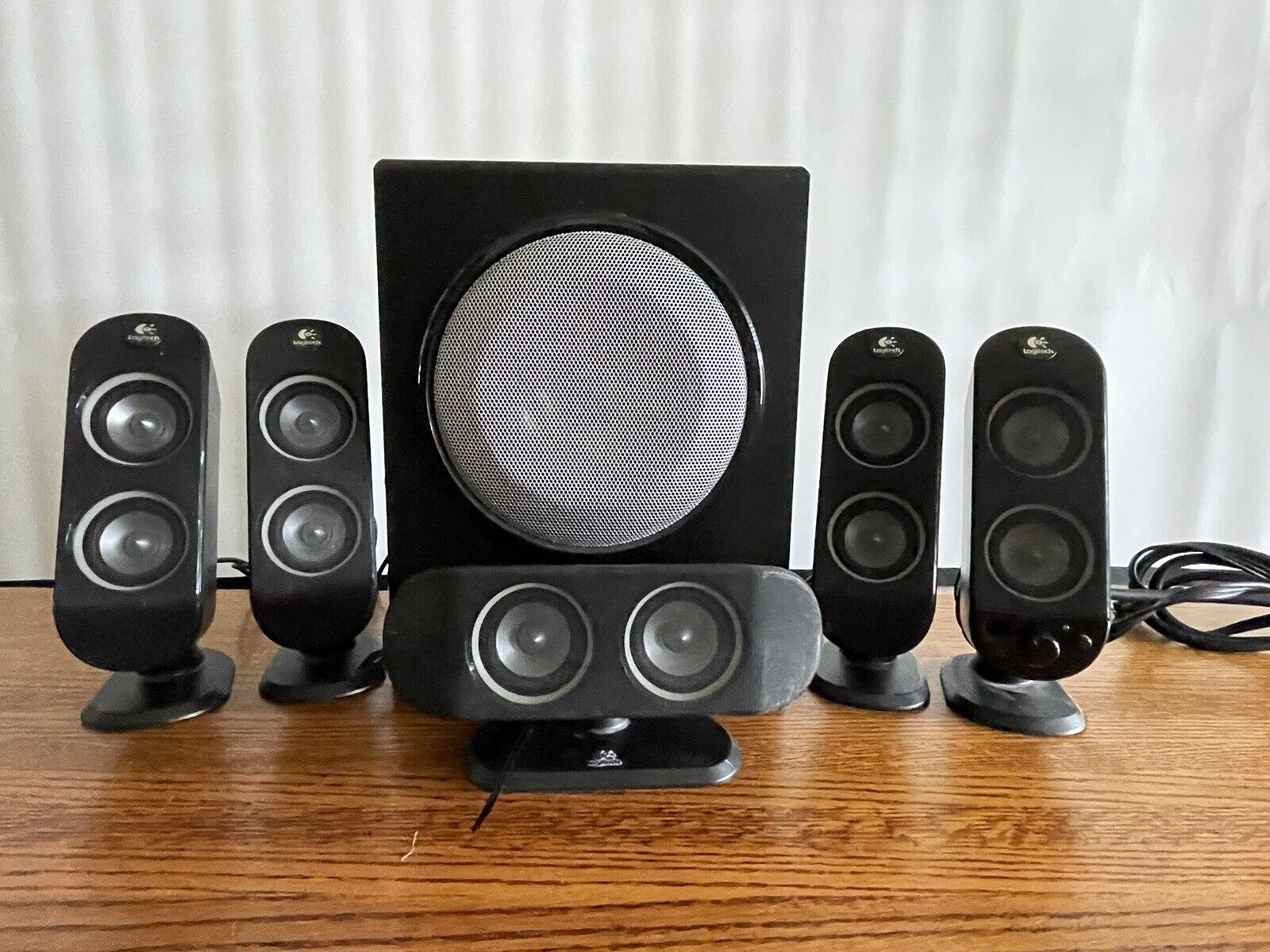Introduction
When it comes to creating an immersive and captivating audio experience, a computer surround sound system can elevate your entertainment to new heights. Whether you're a gaming enthusiast, a movie buff, or a music lover, the right surround sound setup can transport you into the heart of the action, enveloping you in rich, multidimensional soundscapes.
A computer surround sound system typically consists of multiple speakers strategically positioned around a room, working in harmony to deliver audio from different directions. This creates a sense of depth, realism, and spatial accuracy that traditional stereo systems simply can't match. With the advancement of technology, setting up a surround sound system for your computer has become more accessible and affordable than ever before.
In this guide, we'll explore the essential components needed to assemble a powerful and immersive computer surround sound system. From choosing the right speakers and selecting the correct audio receiver to understanding surround sound formats and setting up your system for optimal performance, we'll provide you with the knowledge and insights to embark on this audio adventure with confidence.
Whether you're a seasoned audiophile looking to upgrade your setup or a newcomer eager to dive into the world of surround sound, this guide will equip you with the fundamental understanding and practical tips to make informed decisions and unleash the full potential of your computer's audio capabilities. Let's embark on this journey to unlock the true power of sound and transform your computer into a hub of sonic excellence.
Choosing the Right Speakers
When assembling a computer surround sound system, selecting the right speakers is crucial to achieving an immersive audio experience. The speakers serve as the primary conduits through which sound is delivered, and their quality and configuration significantly impact the overall sonic performance. Here are essential factors to consider when choosing the right speakers for your setup:
- Speaker Configuration: Surround sound systems typically consist of multiple speakers, including front, center, rear, and subwoofer units. The configuration you choose depends on your space and audio preferences. For example, a 5.1 system includes five speakers and a subwoofer, while a 7.1 system adds two additional rear speakers for enhanced surround effects.
- Speaker Size and Placement: Consider the size of your room and the placement of the speakers. Larger rooms may benefit from floor-standing or bookshelf speakers, while compact satellite speakers are ideal for smaller spaces. Additionally, ensuring proper placement, such as angling the speakers toward the primary listening area, is essential for optimal sound dispersion.
- Sound Quality and Compatibility: Look for speakers that deliver clear, balanced, and detailed sound across the frequency spectrum. Compatibility with your audio receiver and other components is also crucial to ensure seamless integration and optimal performance.
- Brand Reputation and Reviews: Research reputable speaker brands known for their quality and reliability. Reading user reviews and expert opinions can provide valuable insights into the performance and durability of different speaker models.
- Budget and Future Expansion: Determine your budget for speakers and consider any future expansion options. Some systems allow for additional speakers to be added for a more expansive surround sound experience, offering flexibility as your audio needs evolve.
By carefully evaluating these factors, you can make informed decisions when selecting speakers that complement your computer surround sound system. Whether you prioritize cinematic dialogue clarity, thunderous bass for gaming, or pristine music reproduction, the right speakers will bring your audio content to life with depth, realism, and impact.
Selecting the Correct Audio Receiver
At the heart of any computer surround sound system lies the audio receiver, a critical component responsible for processing and amplifying audio signals from various sources and distributing them to the connected speakers. When choosing an audio receiver for your setup, several key considerations should guide your decision-making process:
- Compatibility and Connectivity: Ensure that the audio receiver is compatible with your computer and other audio-visual devices. Look for receivers equipped with HDMI, optical, or coaxial inputs to accommodate different connection options, allowing seamless integration with your computer and other media sources.
- Audio Formats and Processing: Select an audio receiver that supports popular surround sound formats such as Dolby Atmos, DTS:X, and others. These formats offer immersive audio experiences by creating three-dimensional soundscapes, placing you at the center of the action with precise and dynamic audio placement.
- Power and Channel Configuration: Consider the power output and channel configuration of the receiver to ensure it aligns with your speaker setup. Whether you opt for a 5.1, 7.1, or more advanced system, the receiver should provide sufficient power and channels to drive your speakers effectively, delivering impactful and distortion-free sound.
- Room Calibration and Sound Optimization: Look for receivers with built-in room calibration and sound optimization features. These technologies analyze your room’s acoustics and speaker placement, automatically adjusting the audio output to compensate for environmental factors, resulting in a more accurate and balanced sound.
- Networking and Streaming Capabilities: Consider receivers with built-in networking and streaming features, allowing access to online music services, internet radio, and seamless connectivity with mobile devices. This enhances the versatility of your system, enabling effortless access to a wide range of audio content.
By carefully evaluating these factors, you can select an audio receiver that serves as the cornerstone of your computer surround sound system, delivering immersive, high-fidelity audio experiences across various entertainment mediums. The right receiver will seamlessly integrate with your setup, unlocking the full potential of your speakers and creating a captivating listening environment.
Understanding Surround Sound Formats
When delving into the realm of computer surround sound systems, understanding the various audio formats is paramount to harnessing the full potential of your setup. These formats play a pivotal role in delivering immersive, multidimensional audio experiences across different types of media, including movies, games, and music. Here are key surround sound formats to consider:
- Dolby Atmos: Dolby Atmos is a cutting-edge audio format renowned for its ability to create a three-dimensional soundstage, adding height channels to the traditional surround setup. This format places sound objects in a 3D space, allowing for precise audio placement above and around the listener, resulting in a truly immersive and lifelike audio experience.
- DTS:X: Similar to Dolby Atmos, DTS:X is designed to deliver object-based audio, offering flexibility in sound placement and movement. By incorporating height channels and object-based audio, DTS:X creates a captivating sonic environment that adapts to different speaker configurations and room layouts, enhancing the overall realism of the soundstage.
- 5.1 and 7.1 Surround Sound: These traditional surround sound formats utilize a configuration of five or seven speakers, respectively, along with a subwoofer. They are widely used in home theater setups and gaming environments, offering a compelling surround experience with distinct audio channels for front, center, rear, and low-frequency effects, enveloping the listener in a cohesive and spatially accurate audio environment.
- Virtual Surround Sound: Virtual surround sound technologies, such as Dolby Virtual Speaker and DTS Virtual:X, aim to simulate a multi-speaker surround experience using a conventional stereo speaker setup. By employing advanced signal processing algorithms, these formats create the illusion of surround sound, expanding the perceived soundstage and enhancing immersion without the need for multiple physical speakers.
- HD Audio Codecs: High-definition audio codecs, including DTS-HD Master Audio and Dolby TrueHD, are designed to deliver lossless, studio-quality audio, preserving the original recording fidelity and dynamics. These codecs are commonly found in Blu-ray discs and high-resolution audio content, ensuring uncompromised audio reproduction for a truly cinematic and audiophile-grade listening experience.
By familiarizing yourself with these surround sound formats, you can tailor your computer surround sound system to accommodate specific audio technologies, unlocking new dimensions of sonic realism and immersion across your favorite entertainment content.
Setting Up Your Surround Sound System
Embarking on the journey of setting up your computer surround sound system is an exciting endeavor that requires careful planning and attention to detail. By following a systematic approach and considering key factors, you can optimize your system for immersive audio experiences. Here are essential steps to guide you through the setup process:
- Speaker Placement and Calibration: Position your speakers according to the recommended guidelines for your specific surround sound configuration. Ensure that front, center, and rear speakers are strategically placed to create a cohesive soundstage, and calibrate their angles and distances to the primary listening area for optimal immersion.
- Subwoofer Integration: Place the subwoofer in a location that complements the low-frequency effects without overpowering the room. Experiment with subwoofer placement to achieve a balanced and impactful bass response, taking into account room acoustics and potential resonance points.
- Audio Receiver Setup: Connect your audio receiver to your computer and other audio-visual sources using the appropriate cables and interfaces. Configure the receiver’s settings to match your speaker layout and audio preferences, ensuring that surround sound formats and room calibration features are activated for an enhanced listening experience.
- Wire Management and Concealment: Conceal speaker wires and cables to maintain a clean and uncluttered setup. Utilize cable management solutions and routing options to minimize visual distractions and create a polished, professional aesthetic while safeguarding against tripping hazards.
- Acoustic Treatment and Room Optimization: Consider acoustic treatments such as sound-absorbing panels, bass traps, and diffusers to address room acoustics and minimize unwanted reflections or standing waves. Optimizing your listening environment can significantly enhance the clarity and precision of your surround sound system.
- Testing and Fine-Tuning: Once the physical setup is complete, test your system with various audio and video content to ensure that each speaker functions as intended and that the overall soundstage is cohesive. Fine-tune speaker levels, crossover settings, and room calibration features to achieve a balanced and immersive audio presentation.
By meticulously following these steps and paying attention to the nuances of speaker placement, audio calibration, and room optimization, you can transform your computer into a hub of captivating audio experiences, immersing yourself in the rich and dynamic worlds of movies, games, and music.
Conclusion
As you conclude your journey into the realm of computer surround sound systems, you stand on the threshold of an audio adventure filled with immersive experiences and captivating sonic landscapes. By carefully choosing the right speakers, selecting a compatible audio receiver, understanding surround sound formats, and meticulously setting up your system, you have laid the foundation for a truly transformative audio environment.
With the evolution of technology and the accessibility of high-quality audio components, the boundaries of sonic immersion are continually expanding, offering enthusiasts and casual users alike the opportunity to elevate their entertainment experiences to unprecedented levels. Whether you seek to be enveloped in the thunderous explosions of a blockbuster film, immersed in the intricacies of a symphonic masterpiece, or transported to the heart of a virtual battlefield, your computer surround sound system stands ready to deliver.
As you fine-tune your system and explore the vast array of multimedia content, remember that the true essence of surround sound lies not only in the technical prowess of the equipment but in the emotional impact it imparts. The ability of a well-crafted surround sound system to elicit genuine emotions, evoke visceral reactions, and breathe life into storytelling is a testament to the power of sound as a conduit to the soul.
Embrace the potential of your computer surround sound system as a gateway to unparalleled audio immersion, allowing yourself to be transported, captivated, and moved by the boundless creativity and artistry of sound. Your journey has just begun, and the symphony of possibilities that awaits you is as vast and dynamic as the sonic tapestries that will unfold before you.
May your computer surround sound system be a catalyst for unforgettable moments, a companion in your quest for audio excellence, and a conduit for the sheer joy of experiencing sound in its most breathtaking form.

























